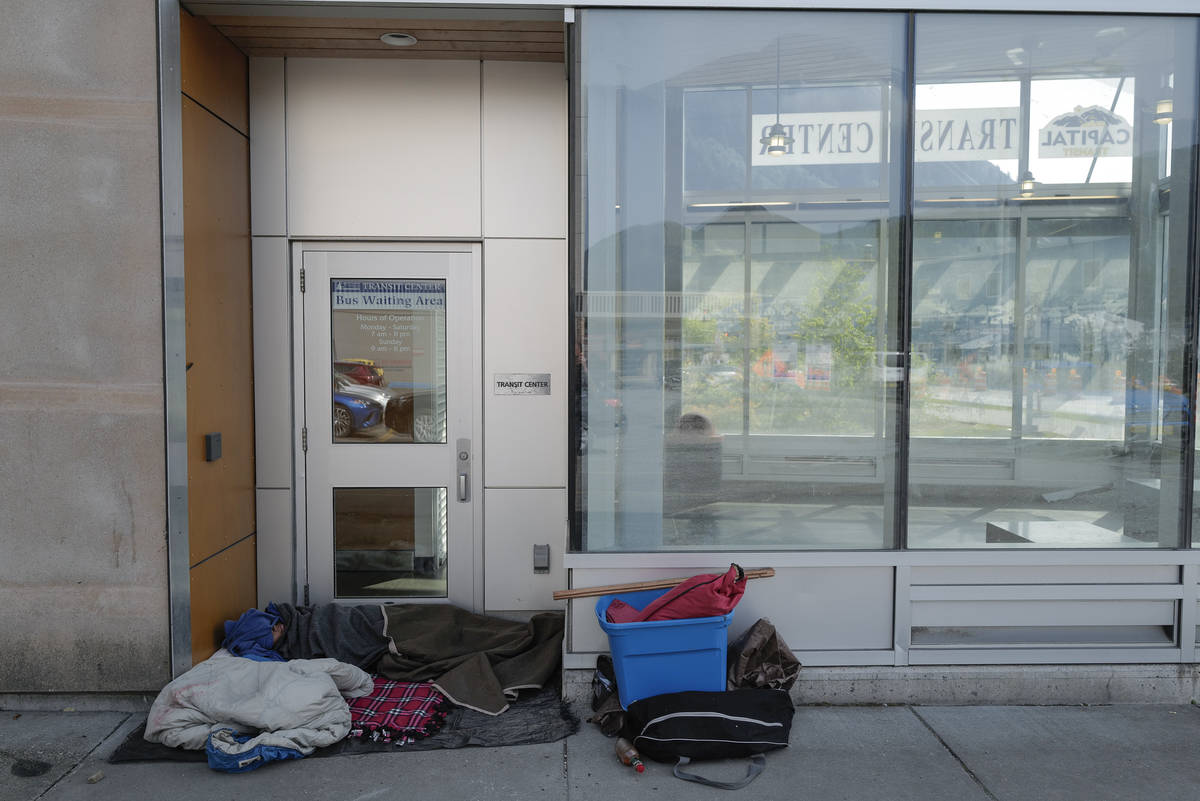The State of Alaska has been awarded a grant to address youth homelessness from the U.S. Department of Housing and Urban Development (HUD), according to Gov. Mike Dunleavy.
Alaska will receive roughly $1.6 million every two years to be distributed to youth homeless services throughout the state.
“What’s unique about this program is a lot of our programs deal with adult homelessness,” Dunleavy said. “This intervenes at an early age before homelessness becomes ‘the life.’”
Funds from HUD are to be allocated, “in perpetuity,” according to the governor.
Dunleavy spoke during a press conference at Wasilla youth homelessness organization My House alongside Department of Labor and Workforce Development Commissioner Tamika Ledbetter, Alaska Coalition on Housing and Homelessness Executive Director Brian Wilson, and My House Executive Director Michelle Overstreet.
The project is currently in the planning phases, but funding should be going out by late 2020, according to a press release from the governor’s office.
Part of HUD’s Youth Homelessness Demonstration Project (YHDP), the grant will triple the amount of federal dollars coming into the state, the release said.
The planning process will be overseen by the Alaska Coalition on Housing and Homelessness which will work with partner agencies to design and develop a program to distribute those funds across the state.
One requirement of the grant is that youth who have experience with homelessness be included in the decision making process.
[Home Sweet Home: Once-controversial housing program seems like a success]
“I can’t emphasize enough how youth driven that process is, 50 percent of the board are youth under 25 who have experienced in homelessness,” Wilson said.
Wilson told the Empire planning and implementation was a three-phase process. The first is a coordinated community planning process that involves stakeholders from around the state.
“We’re working to develop a shared vision, a statement of need, identify programs that should be funded,” Wilson said.
That process needs to be done by the end of April, according to Wilson.
The planning phase will be followed by organizations around the state submitting requests for proposal which will be considered by the coalition and partner agencies. Funds will be awarded after that process.
“It is a competitive process. We will have listed out ‘this area needs this type of program needs this dollar amount.’” Wilson said. It was important that local communities identify their own specific needs because, “homelessness looks very different across the state.”
The HUD money will only fund new programs, so any existing programs that were cut back because of recent budget decisions cannot receive any YHDP money, Wilson said.
All communities across the state excluding Anchorage are eligible to receive funds. HUD defines geographic “continuum of care” regions and Alaska has only two, Anchorage and the rest of the state. Anchorage has been receiving YHDP money for two years already as part of HUD’s effort to pilot the program.
Locally, Wilson said the coalition had already met with a number of youth services organizations in Juneau including the Zach Gordon Youth Center, Juneau Youth Services and the Glory Hall.
“What great about Juneau is you have all these agencies that really work well together,” Wilson said. “There’s not a lot of duplicated services, they collaborate really well, they communicate a lot.”
The organizations in the state must sign a final agreement with HUD by the end of the federal fiscal year on Sept. 30, 2020.
“We aren’t seeing new programs get (funding) until Oct. 1 of next year,” Wilson said.
• Contact reporter Peter Segall at 523-2228 or psegall@juneauempire.com.

